Year 4
The English curriculum is built around the three interrelated strands of language, literature and literacy. Teaching and learning programs should balance and integrate all three strands. Together, the strands focus on developing students' knowledge, understanding and skills in listening, reading, viewing, speaking, writing and creating. Learning in English builds on concepts, skills and processes developed in earlier years, and teachers will revisit and strengthen these as needed.
In Years 3 and 4, students experience learning in familiar contexts and a range of contexts that relate to study in other areas of the curriculum. They interact with peers and teachers from other classes and schools in a range of face-to-face and online/virtual environments.
Students engage with a variety of texts for enjoyment. They listen to, read, view and interpret spoken, written and multimodal texts in which the primary purpose is aesthetic, as well as texts designed to inform and persuade. These encompass traditional oral texts including Aboriginal stories, picture books, various types of print and digital texts, simple chapter books, rhyming verse, poetry, non-fiction, film, multimodal texts, dramatic performances and texts used by students as models for constructing their own work.
The range of literary texts for Foundation to Year 10 comprises Australian literature, including the oral narrative traditions of Aboriginal and Torres Strait Islander Peoples, as well as the contemporary literature of these two cultural groups, and classic and contemporary world literature, including texts from and about Asia.
Literary texts that support and extend students in Years 3 and 4 as independent readers describe complex sequences of events that extend over several pages and involve unusual happenings within a framework of familiar experiences. Informative texts include content of increasing complexity and technicality about topics of interest and topics being studied in other areas of the curriculum. These texts use complex language features, including varied sentence structures, some unfamiliar vocabulary, a significant number of high-frequency sight words and words that need to be decoded phonically, and a variety of punctuation conventions, as well as illustrations and diagrams that support and extend the printed text.
Students create a range of imaginative, informative and persuasive types of texts including narratives, procedures, performances, reports, reviews, poetry and expositions.
(source: www.australiancurriculum.edu.au)
Achievement Standard
Receptive modes (listening, reading and viewing)
By the end of Year 4, students understand that texts have different text structures depending on purpose and context. They explain how language features, images and vocabulary are used to engage the interest of audiences. They describe literal and implied meaning connecting ideas in different textsÂ
They fluently read texts that include varied sentence structures, unfamiliar vocabulary including multisyllabic words. They express preferences for particular types of texts, and respond to others' viewpoints. They listen for and share key points in discussions.
Productive modes (speaking, writing and creating)
Students use language features to create coherence and add detail to their texts. They understand how to express an opinion based on information in a text. They create texts that show understanding of how images and detail can be used to extend key ideas.
Students create structured texts to explain ideas for different audiences. They make presentations and contribute actively to class and group discussions, varying language according to context. They demonstrate understanding of grammar, select vocabulary from a range of resources and use accurate spelling and punctuation, re-reading and editing their work to improve meaning.
(source: www.australiancurriculum.edu.au)
- Plus Plan

Fact and Opinion Sorting Activity
Use this fact and opinion sort to teach your students the difference between statements of fact and statements of opinion.
- Plus Plan

Macaroni Quotation Marks Punctuation Station
Practise using quotation marks in sentences with an engaging Macaroni Noodle Quotation Marks Writing Centre!
- Plus Plan
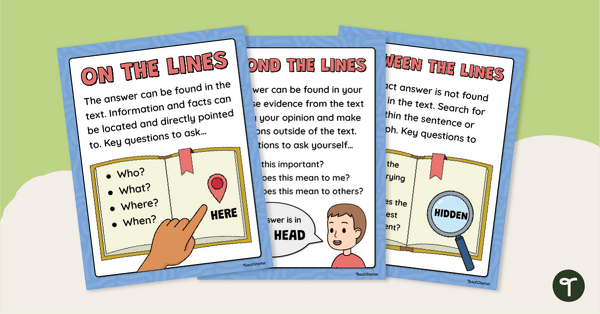
Three Levels of Reading Posters
Teach your students to read beyond the lines, between the lines and on the lines with a set of printable 3 Levels of Reading posters.
- Plus Plan

Koala Information Report – Writing Project
Get your students writing a koala information report using this age-appropriate fact file and writing scaffold.
- Plus Plan

Sequence an Information Report – Cut and Paste Worksheets
Use these information report examples to teach your students about sequencing facts in a logical order.
- Plus Plan

Fact or Opinion? - Digital Learning Activity
Practise identifying, sorting, and writing facts and opinions with an interactive digital learning activity.
- Plus Plan

Language in Persuasive Writing Anchor Chart
Introduce students to the language associated with persuasive writing with a printable persuasive writing anchor chart.
- Plus Plan

Australian Conservationists: Miranda Gibson – Comprehension Worksheet
Learn about Miranda Gibson and her conservation work with this 2-page reading passage and accompanying comprehension questions.
- Plus Plan

Australian Conservationists: Tim Flannery – Comprehension Worksheet
Learn about Tim Flannery and his conservation work with this 2-page reading passage and accompanying comprehension questions.
- Plus Plan
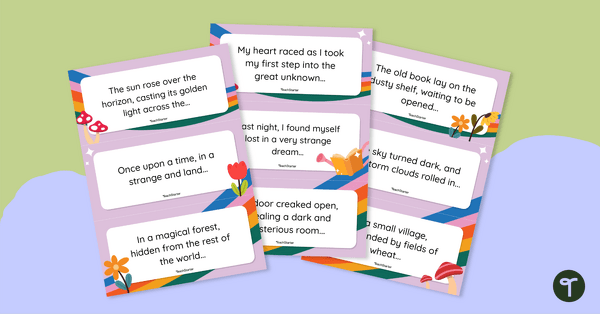
Inspiring Story Starters Task Cards
Get your students writing inspiring stories with this set of story starter task cards.
- Plus Plan

How to Punctuate Dialogue Worksheets
Reinforce understanding of how to punctuate dialogue using double quotation marks with differentiated worksheets.
- Plus Plan

Writing Out Loud: Dialogue Punctuation Worksheet
Practise using double quotation marks in writing with a Punctuating Dialogue worksheet.
- Plus Plan

Text Type Structure Poster Display Pack
Display these posters in your room as a visual reminder of the structure of a variety of text types.
- Plus Plan

Packing in Meaning with Noun Groups Worksheet
Explore the concept of noun groups with this 2-page worksheet.
- Plus Plan

Modal Language Sorting Activity
Explore examples of modal language with your students using this set of 24 sorting cards perfect for your persuasive writing unit.
- Free Plan

Uses of Magnets Comprehension Worksheet
Download this magnets worksheet to teach your Year 4 students about the uses of magnets in our everyday lives.
- Plus Plan
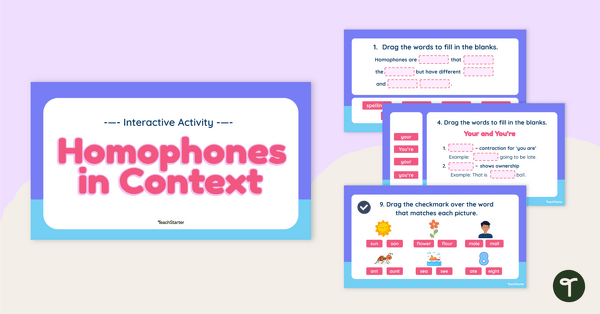
Homophones in Context – Interactive Activity
Review the meanings and spellings of some common homophones with this digital drag-and-drop activity for your vocabulary lessons.
- Plus Plan

Homophones Word Searches
Immerse your students in common homophones with this differentiated set of homophones word searches for your vocabulary lessons.
- Plus Plan

Word Study Lists – Homophones
Introduce your students to the most common homophones with these two sets of comprehensive word lists.
- Plus Plan

Persuasive Device Examples – Cut and Paste Worksheet
Match the persuasive writing techniques with the correct examples using this simple cut-and-paste worksheet perfect for your persuasive writing unit.
- Plus Plan

Innovative Inventors - Year 4 Reading Comprehension Worksheet
Meet famous inventors in history with this informational text and comprehension questions activity
- Plus Plan
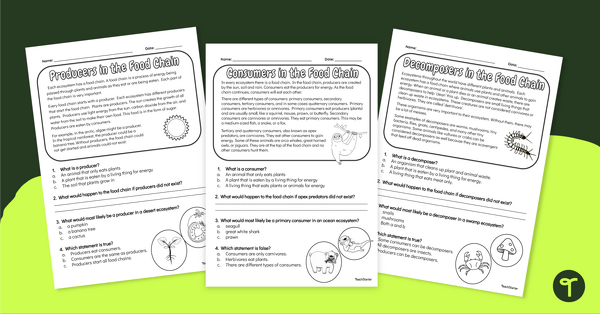
Producer, Consumer, Decomposer - Comprehension Worksheets
Explore the role of producers, consumers and decomposers within ecosystems with this comprehension task.
- Plus Plan

Finding The Main Idea - Comprehension Task (Turtles)
Explore the wonderful world of turtles with this comprehension task focusing on the main idea.
- Plus Plan

Finding the Main Idea Poster
A poster highlighting how to find the main idea when reading a piece of text.
- Plus Plan

Re- Prefix Crossword Puzzle
Review vocabulary skills and boost your students’ knowledge of the “Re-” prefix with a crossword puzzle worksheet.
- Plus Plan
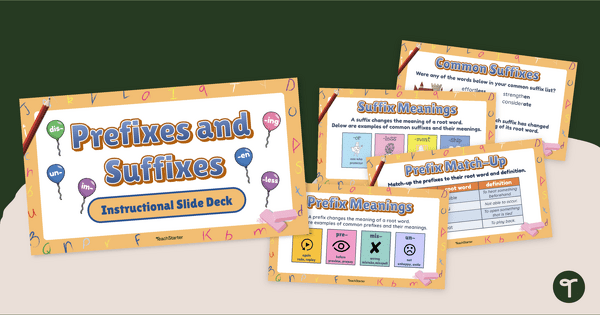
Prefixes and Suffixes PowerPoint
Learn prefix and suffix concepts with an interactive teaching presentation.
- Plus Plan
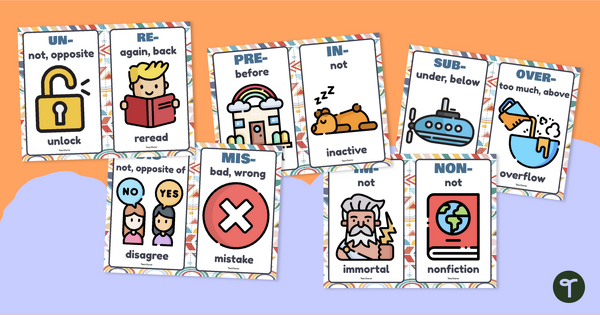
Mini Anchor Charts - Prefixes
Give your students a visual reminder of the meanings of 36 different prefixes with a printable set of miniature prefix anchor charts.
- Plus Plan

Instructional PowerPoint - Prefixes
Teach your students to correctly identify, define, and spell words with common prefixes with an interactive teaching presentation.
- Free Plan

Narrative Writing Word Wall
Review terms related to narrative texts and narrative writing with a set of 33 narrative vocabulary word wall cards.
- Plus Plan
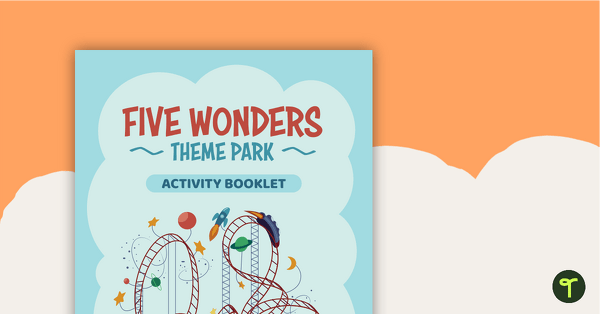
Five Wonders Theme Park: Slither House Sketch – Project
An inquiry project that encourages students to research animals and their habitats and design a reptile house in a theme park.
- Free Plan

Biography Brochure Template
A brochure template to use when writing biographies.
- Plus Plan

Wheely Wonderful Words – Overused Adjectives
Banish overused adjectives with a handy adjective-synonym word wheel!